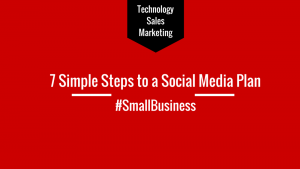First of all, let’s look at what the status quo is, and why companies stay with it.
From Wikipedia – “meaning the existing state of affairs. It is a commonly used form of the original Latin “status quo” – literally “the state in which”. To maintain the status quo is to keep the things the way they presently are.”
The status quo is always your biggest competitor in any B2B selling situation. In fact, CSO Insights, the venerable sales research firm, has consistently found that over 50% of forecasted sales opportunities are not closing at the time, and for the value expected, if at all.
Going further into their research, they have stated that almost all of these losses were because the prospect decided to do nothing. The prospect did not go to a competitor.
These NO DECISIONS are utilizing an enormous amount of sales and marketing time, which is ending up being wasted.
Why Companies Remain with the Status Quo
For three years in a row, the benchmark and advisory firm Sirius Decisions has reported that the number one revenue inhibitor, in complex B2B sales environments, continues to be the vendor’s inability to communicate value.
One of the reasons, that these vendors haven’t succeeded in conveying their value, is that most of the effort has been spent focusing on the value of their solutions, and not on the cost to the prospect dealing with the problem.
There are a number of reasons companies will stay with the status quo, instead of going with your solution. Let’s have a look at some of them.
1. They don’t see the value of changing
I. You haven’t made a strong enough value proposition for them to change.
I find this to be the number one contributor to companies losing sales, and most often to the status quo. There are a number of reasons for this happening.
Many companies don’t really know what their value proposition really is. I see companies stating motherhood and apple reasons like,
i. You will get better productivity with our solution
ii. We have helped many others get a greater benefit
iii. We listen to what our clients tell us
iv. And all the other ridiculous statements that mean absolutely nothing to your prospect.
I see so many companies with statements like these that no wonder companies don’t buy. Your value proposition has to have two key elements to it.
1. It must show some number, usually a percentage, of the amount of savings, profit, revenue and/or productivity gained. You need to work these numbers out for each client. But there should be some correlation with other clients, to make your job easier.
2. You need to work with your prospect, through investigative questioning, what his/her personal reasons and objections are for changing or not changing. As I always say – get to NO, before your get to yes. This saves your sales force and marketers an inordinate amount of time.
This doesn’t mean you give up on a prospect, if you truly believe you can help them. But this is where the nurturing process takes over, until they realize they do need it, or you realize that they will never be a customer.
II. You haven’t explained the Cost of Inaction (COI).
This is really a corollary of your value proposition. Your value proposition should have, as part of its statement, this part of the proposition. This should be part of your questioning; understanding what happens if they don’t take action. And what are the consequences both to him/her personally, and to his/her company, from inaction?
2. They feel your solution is too risky.
This follows on from not having the right value proposition. You need to explain the risks of both implementing and not implementing your solution.
There is one risk of not implementing which is easy to overcome. This risk in when a government legislates something that must be carried out by each company, or they risk getting a huge fine, or possibly even going to jail. Sarbanes Oxley was such a piece of legislation.
The other risk has two different aspects to it.
i. Your solution may carry some implementation risk. It may be a major implementation that takes quite a bit of time and resources to implement, like an ERP system. You need to step them through each stage and let them know the responsibilities from both your team and their team. This will help mitigate this risk factor.
ii. Again, you need to reinforce the cost of inaction (IE: the risks of inaction) to both them personally and to their company.
3. They just implemented another similar solution.
When I worked for IBM, waaay back in the 70’s, if you found that a prospect had just implemented a competitive solution, you were not allowed to talk to that company for a full year after implementation. If you did talk to them, you were fired on the spot.
There are a number of reasons for this, but mostly because you should never disparage a competitor. And, you are wasting an awful lot of time, both yours and your company’s time by chasing them. The prospect is going to see how their decision and implementation works out, before they look at another solution.
So, keep them in the pipeline by showing them what you are doing through communication pieces, just in case something goes wrong. But do not ask to see them for at least a year.
4. Other projects are taking up the resources needed.
This is a very real problem that happens more often than not. And it is a big factor that contributes to many status quo losses. However, with the right questioning techniques, you should be able to ascertain if this is happening or not, within your first interview with the prospect.
5. They really don’t have the money right now.
This may also be the case. There a number of reasons for this.
i. You are talking to the wrong person. You need to have your first meeting with the person that has enough influence, to reach into a corporate budget, if he/she thinks the value is there for them to move.
ii. They may have tied up all of their money and other resources on another project.
iii. They may be looking at acquisitions, or being acquired, and therefore are not prepared to do anything until these situations are completed.
As you can see, there are many factors you have to think about, when you are prospecting and talking to a company about your products and services.
However, with the right questioning techniques, you will discover this early on in the process. Then you know whether you should proceed with them as a prospect; put them on the back burner for a while, but with constant communication pieces; or realize they will never be a legitimate prospect.
Get to NO before you get to Yes and you will save yourself and your company a lot of time, money and energy.
Business & Finance Articles on Business 2 Community(63)
Report Post





